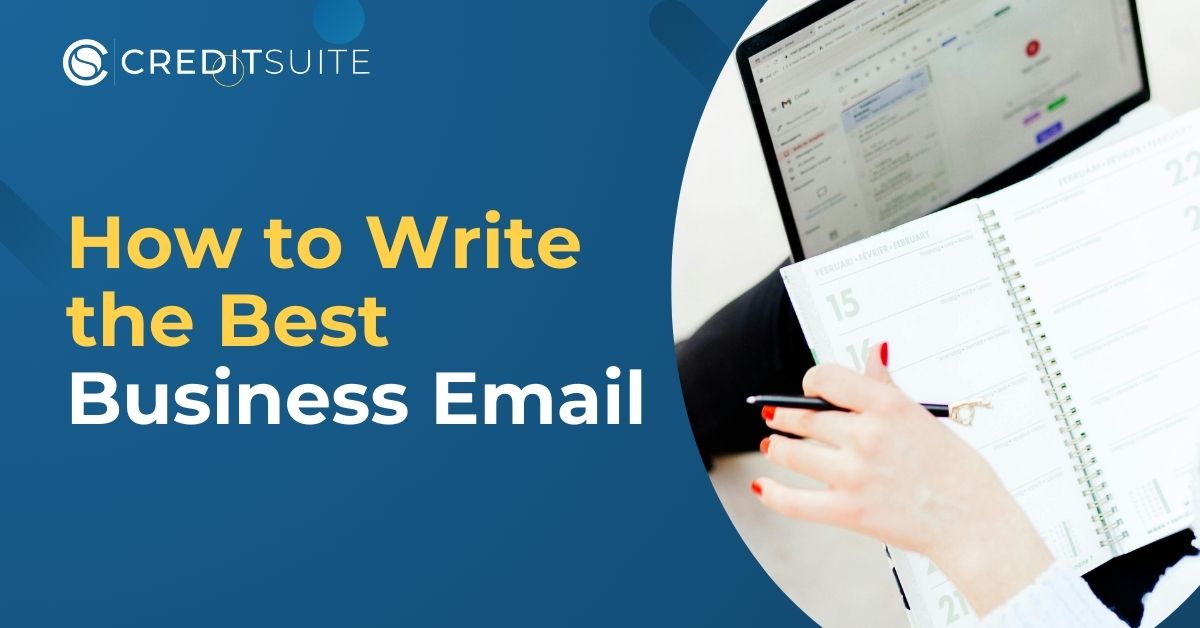Ever been caught in that internal debate of whether to begin a business email with a “Hi” or a “Dear”? Or have you ever experienced that split-second hesitation right before clicking the send button, wondering if your business email will get the result you want?
Don’t sweat it. That’s about to change.
In this article, you’ll find effective tips for writing business emails that drive your expected results.
What Is a Business Email?
A business email is an email sent in a business setting to communicate internally or externally. Internal business emails are sent between people within an organization. On the other hand, external emails are sent to people outside your organization, like prospective partners, investors, and customers.
The goal of writing business emails may vary depending on who you’re sending it to. For instance, an email message sent to a customer is often to nurture or convert them along the email marketing funnel. But when emailing a colleague, your intention might be to pass on important information or coordinate efforts.
But to achieve any of these email goals, some essential practices must be considered. Let’s get into them:
Effective Tips for Writing a Business Email
Writing a business email is more than just writing down the first thing that comes to your mind. You need to know how to write each email component, the tone and language you’re supposed to use, and then, finally, how to proofread your email. Let’s look at those in this section:
Writing Each Email Section
A business email has various components. Let’s dissect these sections and highlight the best email writing practices for them.
- Subject line
The average human sees emails as interruptions. So, if your email subject line doesn’t interest them, they won’t bother to see what you have to say.
The subject line is that short line of text the recipient sees when they get your email. It gives the summary of your email’s intention:

Typical email communication subject line
There’s no hard and fast rule for subject lines. Simply ensure that it states exactly what your email is all about in an attention-grabbing, relevant, and concise way.
For instance, instead of using vague words like “urgent,” you can say “Action Required: Review and Approve Client Proposals by Tuesday” The latter is more specific and communicates exactly what the email is all about.
- Greeting
Even the tiniest detail in an email can affect the impression you make. So, pay attention to your salutation.
The business email greeting prefixes are the formal “Dear” and the less formal “Hello/Hi.”
Reserve “Dear” for email recipients with whom you have no prior personal or professional relationship. For instance, a prospective client, hiring manager, etc. But “Hello/Hi” is appropriate when writing to a colleague or individuals you share a familiar professional relationship.
Avoid gender-specific greetings like Dear Sir or Hello Madam. This may lead to misgendering the recipients and unintentionally upsetting them. Instead, consider personalizing the greeting by including the recipient’s name – Dear Smith, Hi Natasha, etc.
- Email body
The average professional uses 28% of their work day to read and respond to hundreds of emails. Obviously, these people don’t want to hunt for the main point in your email – so don’t make them.
Insert the purpose of the email after the greeting clearly and concisely:

Formal email format (body)
Also, make the email body readable by splitting it into paragraphs, using bullet points, or highlighting key details with bold or italic formatting.
Take advantage of generative AI tools like Ask Writer to write clear and concise business emails. Simply insert a prompt containing the tone and key points of the email. Within seconds, it will generate every part of the email with accuracy.

Quick email output from Writer
Now, with the body addressed, what’s next?
- Closing statement with CTA
Your closing statement is the final chance to leave an impression on the recipient and prompt them to take further action.
If you seek a response from the recipient, be sure to add a call to action in your closing statement. This tells them how to respond with an actionable message:

Formal email closing statement with action details.
Also, always end your closing statement with gratitude while sending a quick farewell:

Email closing statement (gratitude and farewell)
For your farewell, it’s best to stick with safe options like Best regards, Sincerely, or Thanks.
- Email Signature
Just below the closing statement, add your email signature. An email signature should cover everything your audience needs to know about your professional life. These include:
[Your Full Name]
[Your Job Title]
[Company Name]
[Phone Number]
[Other Contact Details]
See for example:

Example of business email signature
This section helps you maintain a sense of professionalism in your email.
But even the best-written email is useless if it doesn’t get to the right recipient. So, before sending an email, make sure to verify email addresses of recipients to ensure they are valid. This is especially vital when doing cold outreach.
Determining Tone and Language
Your tone and language depend on who you’re sending the email to. So, consider the level of familiarity of the audience with you and adapt the language accordingly. This could be formal, friendly, or somewhere in between.
Say you’re emailing a long-time client. You can use a warm or friendly tone with a lower level of formality. So, phrases like “It was great catching up with you last week” can be appropriate.
But always maintain professionalism and politeness regardless of the tone you choose. Avoid colloquialisms, slang, or cliche phrases like ASAP and Hey There.
Your language should also be positive and constructive. Instead of focusing on problems, pay attention to the solution. Don’t use negative or confrontational language that can affect collaboration or the outcome you want.
For instance:
- Don’t say: Your idea won’t work
- Say: I was thinking of approaching the problem from this angle… Let me know if you think this would work.
This helps you maintain professionalism while ensuring no one feels dismissed.
Proofreading
Don’t rush to click send. Always look at the email all over again to ensure it is free from:
- Grammatical errors
- Spelling errors
- Awkward phrasings and communication styles.
Tools like Grammarly can help you check for these errors. Once again, you can leverage generative AI tools to scan the content for any errors.
Also, check for readability using Hemingway. Ideally, aim for a grade 6 to 7 to make your content accessible to as many people as possible. However, this can vary depending on your topic and target audience.
For example, if you’re a DTC brand, keeping the readability level at grade 8 or lower is best. If you’re targeting enterprise B2B customers and are discussing a fairly technical subject, copy with a readability of grade 9 or even 10 is acceptable since you’re talking to a knowledgeable audience.
In Closing
With the right guide, writing business emails can be a breeze. Optimize every section, from the subject line and greeting to the body, closing statement, and signature. Then, pay attention to the tone and language.
Before clicking send, proofread your email. You’ll be a master at crafting effective business emails.


